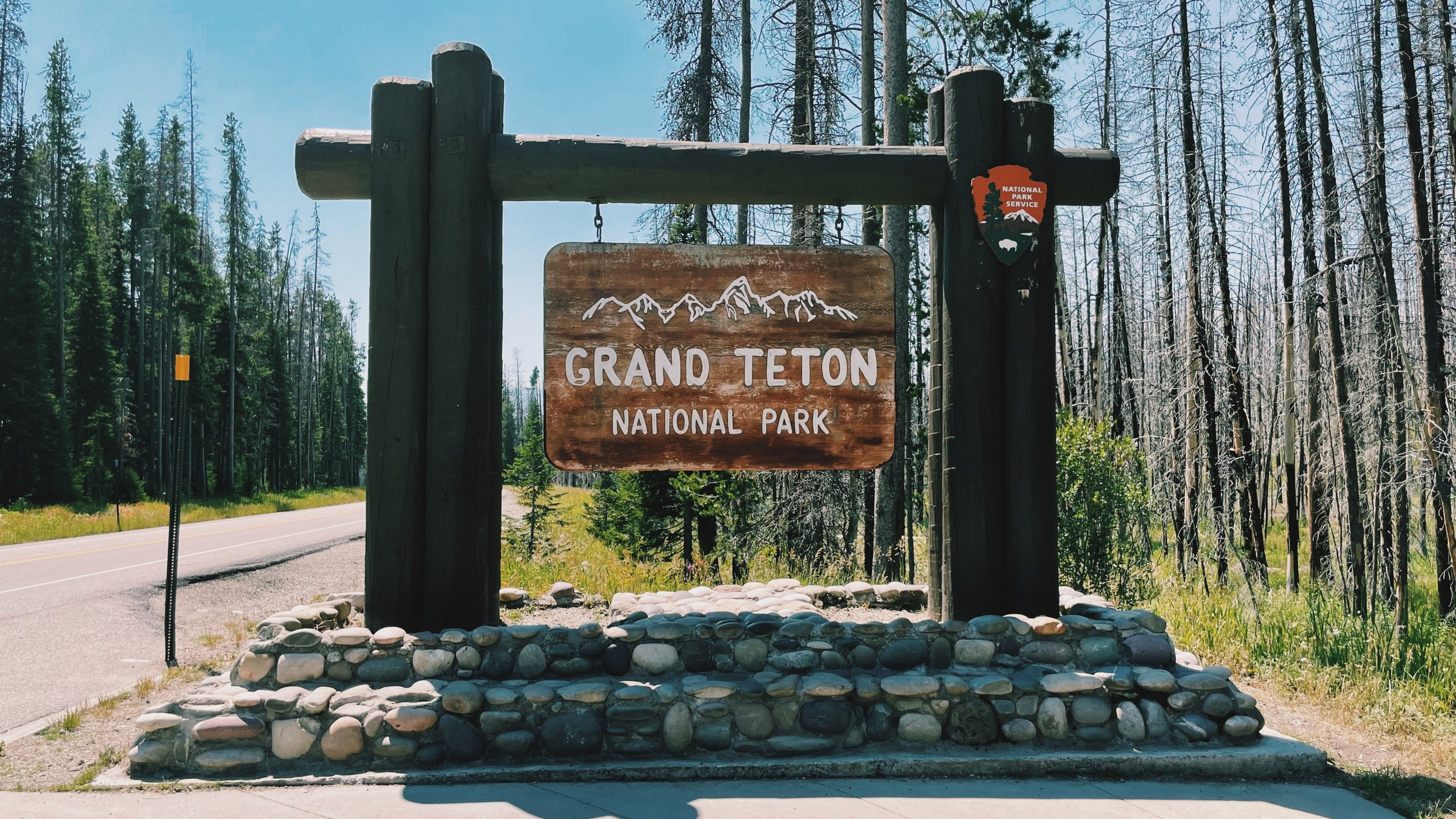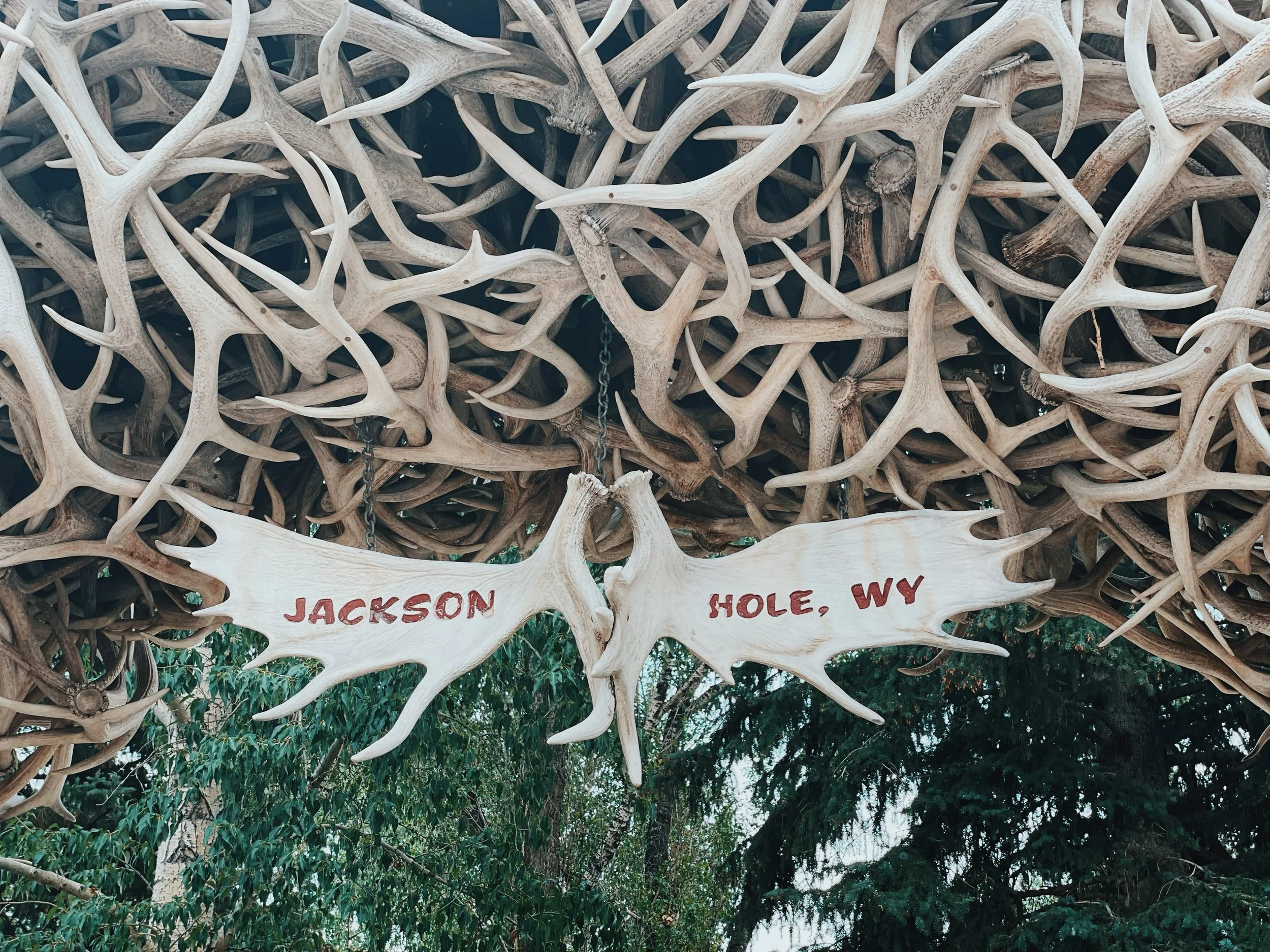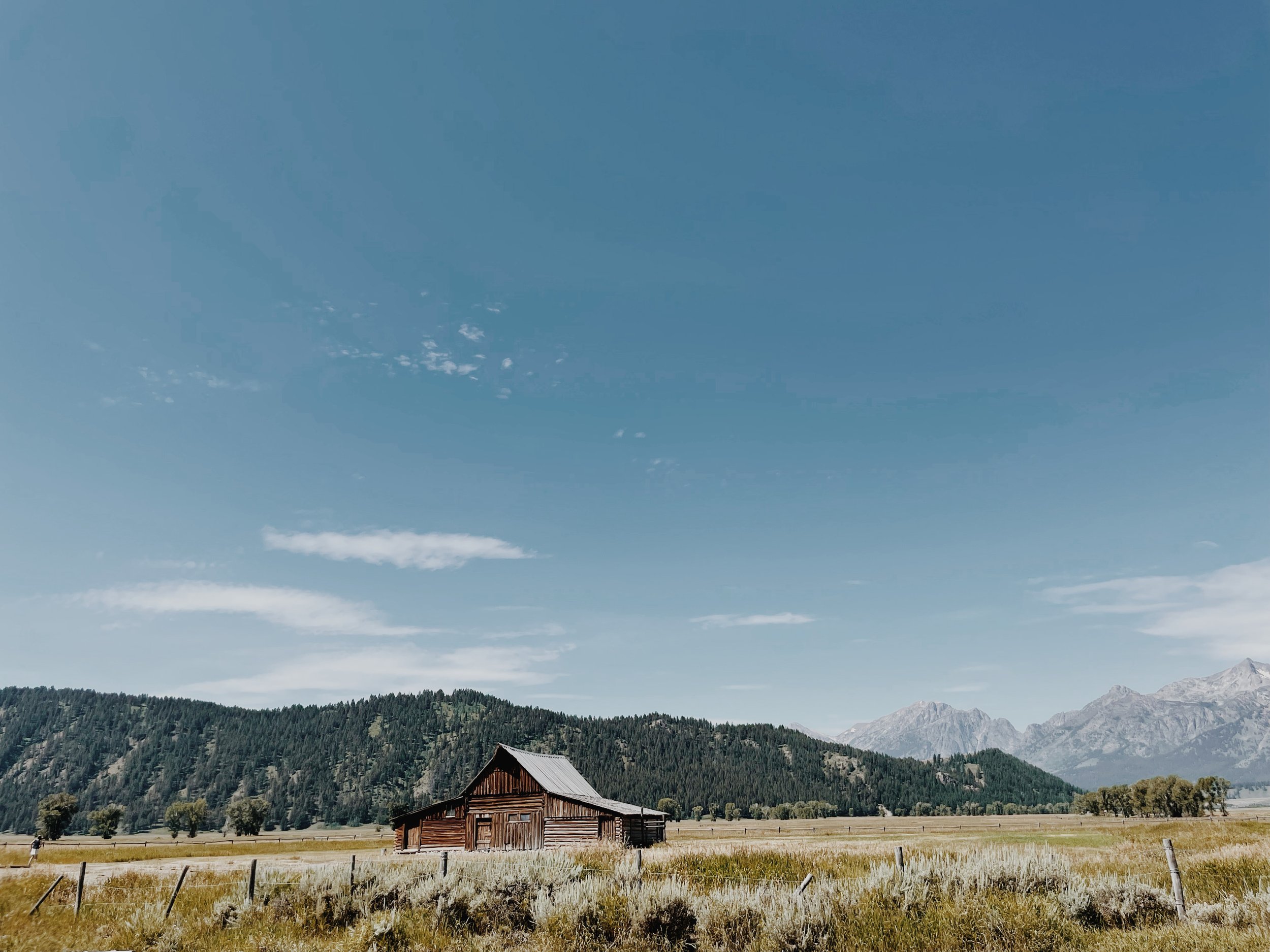Discover the Reasons to Camp Near Grand Teton National Park (Jackson Hole).
Nestled in the heart of Wyoming, Grand Teton National Park and the charming town of Jackson epitomize natural splendor. The Teton Range's rugged peaks command the skyline, their majestic grandeur reflected in pristine alpine lakes below. Lush valleys teem with vibrant flora and fauna, offering a haven for wildlife enthusiasts and nature lovers. The Snake River winds through the landscape, providing a vital lifeline to the ecosystem and opportunities for scenic float trips and serene fishing expeditions. With its rich biodiversity and breathtaking vistas, this region showcases the raw beauty of the American West, inviting visitors to immerse themselves in a landscape that embodies the essence of wonder and awe. In Jackson, a genuine Western atmosphere permeates the streets, where antler arches stand as iconic symbols and local artistry thrives. With its perfect blend of outdoor adventure and small-town charm, Jackson serves as a gateway to the natural wonders of Grand Teton National Park, creating an experience that lingers in the hearts of all who have the privilege to explore this extraordinary corner of the world.
Jackson, Jackson Hole, and Grand Teton National Park are different.
When I visited this area, someone quickly corrected me on my understanding of what Jackson Hole is. I always understood it as the cute boogie ski town in Wyoming. Not true. Jackson, Wyoming, and Grand Teton National Park are in the Jackson Hole region. Jackson Hole is a valley surrounded by the Teton Range to the west and the Gros Ventre Range to the east. The town of Jackson is situated at the southern end of Jackson Hole. At the same time, Grand Teton National Park encompasses much of the northern part of the valley, including the iconic Teton Range. The Snake River winds through Jackson Hole, adding to the area's natural beauty. The town, the national park, and the surrounding wilderness make Jackson Hole a popular destination for outdoor enthusiasts and nature lovers.
Now that we have cleared all that up when you want to camp, you can camp in Jackson Hole and quickly get to all of the above in minutes.
The first settlers were the number one reason to camp in Jackson Hole.
The first settlers did it. In the late 19th century, Jackson Hole became a destination for immigrants seeking new opportunities in the American West. Drawn by the promise of fertile land and abundant natural resources, these pioneers embarked on arduous journeys across the continent. They traversed rugged terrain, navigated treacherous mountain passes, and forded swift-flowing rivers, enduring immense challenges. As they approached Jackson Hole, their sights were met with the breathtaking panorama of the Teton Range, an eye that must have inspired both awe and determination. Upon arrival, many early settlers initially camped outdoors, their canvas tents dotting the valley floor. These makeshift camps served as temporary shelters while they labored to build more permanent homesteads. Their pioneering spirit and resilience in adversity laid the groundwork for the vibrant community and enduring traditions that define Jackson Hole today.
Where should I camp in Jackson Hole?
Fishing at our camp at Snake River Park KOA.
Gros Ventre Campground:
Location: Grand Teton National Park, approximately 11 miles northeast of Jackson.
Highlights: Scenic views, proximity to the Gros Ventre River, and wildlife viewing opportunities.
Jenny Lake Campground:
Location: Grand Teton National Park, near the shores of Jenny Lake.
Highlights: Stunning lake views, access to hiking trails, and close to popular attractions like Hidden Falls and Inspiration Point.
Colter Bay Campground:
Location: Grand Teton National Park, on the shores of Jackson Lake.
Highlights: Lakeside setting, water activities, proximity to the Colter Bay Visitor Center.
Signal Mountain Campground:
Location: Grand Teton National Park, on Signal Mountain overlooking Jackson Lake.
Highlights: Scenic overlooks, hiking trails, close to Signal Mountain Lodge.
Snake River Park KOA:
Location: 9705 S Highway 89, Hoback Junction (about 15 miles south of Jackson).
Highlights: Full-service campground, proximity to the Snake River, on-site amenities.
Fireside Resort at Jackson Hole Campground:
Location: 2780 N. Moose Wilson Rd, Wilson (just northwest of Jackson).
Highlights: Luxury camping experience with glamping cabins and full RV hookups.
Camping guidelines in Jackson Hole.
Camping guidelines are in place for the Jackson Hole Valley area around Grand Teton National Park. These guidelines allow us to have a good time respecting the land and playing safe with lots of wildlife. Remember, we are camping in their home essentially. These guidelines are not specific to a campground but are an overarching set of guides.
Designated Campgrounds: Camping is only allowed in designated campgrounds within Grand Teton National Park and the surrounding Bridger-Teton National Forest. These campgrounds have designated sites, amenities, and facilities.
Permits and Reservations: Obtaining the necessary licenses or reservations before camping in the area is essential. Many campgrounds, especially those within national parks, require reservations, and some have specific permit requirements.
Campfire Regulations: Campfires may be restricted or prohibited in certain areas, especially during high fire danger. Always check for fire regulations and use established fire rings or grills where permitted.
Leave No Trace: Practicing Leave No Trace principles is crucial to minimizing your environmental impact. This includes packing out all trash, avoiding damage to vegetation, and respecting wildlife. All in all, don’t be a litterbug.
Wildlife Safety: Be aware of wildlife in the area. Store food properly to prevent attracting animals, and follow guidelines for safely encountering wildlife. This is for your safety.
Quiet Hours and Respect for Others: Quiet hours are typically enforced in campgrounds to ensure a peaceful environment for all visitors. Respect the privacy of fellow campers. Don’t be that person.
Pets: They must always be on a leash.
Backcountry Camping: Special regulations and permits may apply if you plan camping in the backcountry.
Permit and licenses you may need to camp in the Jackson Hole area.
Grand Teton National Park: You will need a camping permit to camp within Grand Teton National Park. The park has several campgrounds, and reservations are highly recommended, especially during peak seasons.
Bridger-Teton National Forest: For camping in the national forest areas surrounding Jackson Hole, you may need to obtain a camping permit or follow specific regulations. Some dispersed camping areas may have different rules, so checking with the local forest service office is essential.
Private Campgrounds: If you choose to camp in a private campground in the Jackson Hole area, you will generally not need a separate camping permit. However, making reservations is still a good idea, especially during busy times.
Backcountry Camping: If you plan to camp in the backcountry outside of established campgrounds, additional permits may be required, especially in national parks and wilderness areas. Check with the relevant land management agency for the specific regulations.
To learn more, visit the National Park Service and the U.S. Forest Service.
In conclusion, camping offers the best way to experience Grand Teton and the surrounding region authentically.
There are many options for sleeping outside in this region. You can take it to the back-country, stay at one of the national park campsites,s or even go glamping if camping in the most natural way is not your thing. This area is terrific. Sleeping under the stars as the settlers did in the 1800’s, well, you can’t beat that.




